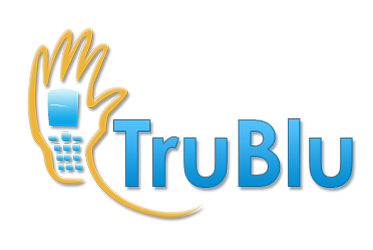Are you tired of waiting for your website to load? Do you want to provide your users with a faster and more efficient browsing experience? If so, speed optimization techniques and tools are essential for your website. By optimizing your website’s speed, you can improve user experience, increase conversions, and boost your search engine rankings.
Speed optimization techniques involve various strategies to reduce loading times, such as image optimization, code minification, and caching. Additionally, there are many tools available to help you identify and fix speed issues, such as Google PageSpeed Insights, GTmetrix, and Pingdom. These tools analyze your website’s performance and provide detailed reports on areas that need improvement.
In this article, we will explore the best speed optimization techniques and tools that you can use to improve your website’s loading times. We will cover everything from image optimization to code minification and provide step-by-step instructions on how to use popular speed optimization tools. By the end of this article, you will have the knowledge and tools you need to optimize your website’s speed and provide your users with a better browsing experience.
Table of Contents
ToggleUnderstanding Speed Optimization
Speed optimization is the process of improving the loading speed of a website or application. It involves various techniques and tools that help to reduce the time it takes for a website or application to load. In today’s fast-paced world, speed optimization has become a critical factor for online success.
Importance of Speed Optimization
Speed optimization is essential for several reasons. First, it improves the user experience by reducing the time it takes for a website or application to load. This can lead to increased user engagement and retention. Second, it can improve search engine rankings. Search engines like Google consider page speed as a ranking factor. A faster website or application can result in higher search engine rankings, which can lead to increased traffic and revenue.
Key Factors Affecting Speed
Several factors can affect the speed of a website or application. Some of the key factors include:
- Server Response Time: The time it takes for the server to respond to a request can significantly affect the loading speed of a website or application. A slow server response time can result in a slow website or application.
- Image Optimization: Images can significantly affect the loading speed of a website or application. Optimizing images by reducing their size and compressing them can help to improve the loading speed.
- Code Optimization: The code used to build a website or application can also affect the loading speed. Bloated or poorly written code can slow down a website or application. Optimizing the code can help to improve the loading speed.
- Caching: Caching involves storing frequently accessed data in the user’s browser or server. This can help to reduce the time it takes for a website or application to load.
In conclusion, speed optimization is crucial for online success. By understanding the importance of speed optimization and the key factors that affect speed, website and application owners can take steps to improve their loading speed and provide a better user experience.
Speed Optimization Techniques
When it comes to website speed optimization, there are several techniques you can use to improve your website’s performance. Here are some of the most effective techniques:
Code Minification
Code minification is a technique that involves removing unnecessary characters and spaces from your website’s code. This can significantly reduce the size of your website’s files, which can help to improve its loading speed.
To minify your code, you can use tools like YUI Compressor, Closure Compiler, or UglifyJS. These tools can automatically remove unnecessary characters and spaces from your code, making it more efficient and faster to load.
Image Optimization
Images are an essential part of any website, but they can also be a significant contributor to slow loading times. To optimize your images for speed, you can use tools like Photoshop or GIMP to reduce the file size of your images without sacrificing quality.
You can also use image compression tools like TinyPNG or JPEGmini to further reduce the size of your images. These tools can compress your images without sacrificing quality, making them faster to load.
Use of CDN
A Content Delivery Network (CDN) is a network of servers that are distributed around the world. By using a CDN, you can deliver your website’s content from the server that is closest to your user, reducing the time it takes for your website to load.
CDNs like Cloudflare, Amazon CloudFront, and MaxCDN can help to improve your website’s loading speed by caching your website’s content on their servers and delivering it to your users from the server that is closest to them.
Browser Caching
Browser caching is a technique that involves storing your website’s files on your user’s computer. By doing this, you can reduce the amount of time it takes for your website to load on subsequent visits.
To enable browser caching, you can add caching headers to your website’s files. These headers tell the user’s browser how long to cache your website’s files before requesting them again.
In conclusion, by using these speed optimization techniques, you can significantly improve your website’s loading speed and provide a better user experience for your visitors.
Speed Optimization Tools
When it comes to optimizing website speed, there are several tools available that can help you analyze your website’s performance and identify areas for improvement. Here are some of the most popular speed optimization tools:
Google PageSpeed Insights
Google PageSpeed Insights is a free tool that analyzes the content of a web page and generates suggestions to make that page faster. The tool evaluates both the desktop and mobile versions of a website and provides a score out of 100. A score of 90 or above is considered good.
The tool provides detailed recommendations for improving page speed, such as optimizing images, leveraging browser caching, and minimizing JavaScript and CSS. The tool also provides a list of prioritized suggestions, so you can focus on the most critical issues first.
GTmetrix
GTmetrix is another popular speed optimization tool that provides a comprehensive analysis of a website’s performance. The tool analyzes a website’s speed and provides a detailed report on page load time, page size, and the number of requests made by the website.
GTmetrix also provides recommendations for improving website speed, such as minimizing HTTP requests, optimizing images, and leveraging browser caching. The tool also provides a waterfall chart that shows the loading time of each element on the page, so you can identify areas that need improvement.
Pingdom Speed Test
Pingdom Speed Test is a website speed optimization tool that provides a detailed analysis of a website’s performance. The tool analyzes a website’s speed and provides a report on page load time, page size, and the number of requests made by the website.
Pingdom Speed Test also provides recommendations for improving website speed, such as optimizing images, minimizing HTTP requests, and leveraging browser caching. The tool also provides a waterfall chart that shows the loading time of each element on the page, so you can identify areas that need improvement.
Overall, these tools can help you identify areas for improvement and optimize your website’s speed. By using these tools, you can ensure that your website is fast and responsive, providing a better user experience for your visitors.
Implementing Speed Optimization
When it comes to implementing speed optimization techniques, there are two key phases: planning and strategy, and execution and monitoring. In this section, we’ll take a look at each of these phases in more detail.
Planning and Strategy
Before you can begin optimizing your website for speed, you need to have a plan in place. This involves identifying the key areas of your site that could benefit from optimization, as well as setting goals and metrics to measure your progress.
One of the first steps in the planning phase is to conduct a website audit. This involves analyzing your site’s current performance and identifying areas for improvement. Some key metrics to look at include page load times, bounce rates, and conversion rates.
Once you’ve identified the areas of your site that need improvement, you can start developing a strategy to optimize them. This might involve a combination of techniques, such as compressing images, minifying code, and leveraging browser caching.
Execution and Monitoring
Once you have a plan in place, it’s time to start executing your optimization strategy. This involves implementing the various techniques you identified during the planning phase, and monitoring your site’s performance to ensure that your optimizations are having the desired effect.
One key tool for monitoring your site’s performance is Google Analytics. This free tool provides a wealth of data on your site’s traffic, user behavior, and more. By tracking metrics such as page load times, bounce rates, and conversion rates, you can gain valuable insights into how your site is performing and where you need to focus your optimization efforts.
Another important tool for executing and monitoring your optimization strategy is a content delivery network (CDN). A CDN can help to speed up your site by caching content on servers located closer to your users. This can significantly reduce page load times and improve overall user experience.
In summary, implementing speed optimization techniques requires careful planning and execution. By conducting a website audit, developing a strategy, and monitoring your site’s performance, you can identify areas for improvement and implement the necessary optimizations to improve your site’s speed and user experience.
Conclusion on Speed Optimization
In conclusion, optimizing website speed is crucial for providing a good user experience and improving search engine rankings. By implementing some of the techniques and tools mentioned in this article, you can significantly improve your website’s loading time. Here are some key takeaways:
- Performance testing is the first step to identifying the areas that need improvement. Use tools like GTmetrix, Pingdom, or Google PageSpeed Insights to get a detailed report on your website’s performance.
- Image optimization is one of the most effective ways to reduce page size and speed up loading times. Use tools like TinyPNG or Kraken.io to compress images without sacrificing quality.
- Caching is another powerful technique that can significantly reduce server response time. Use plugins like WP Super Cache or W3 Total Cache to enable caching on your website.
- CDNs can help reduce the distance between your website’s server and the user’s browser, resulting in faster loading times. Use services like Cloudflare or MaxCDN to deliver your website’s content from the nearest server to the user.
- Minification is the process of removing unnecessary characters from code, such as whitespace and comments. Use tools like UglifyJS or YUI Compressor to minify your website’s HTML, CSS, and JavaScript files.
By implementing these techniques and tools, you can significantly improve your website’s speed and provide a better user experience. Remember to regularly test your website’s performance and make necessary adjustments to ensure optimal speed.
Frequently Asked Questions
What are some effective techniques for optimizing website speed?
There are several techniques that can help improve website speed, including optimizing images and videos, enabling caching, reducing server calls, and using a content delivery network (CDN). Additionally, minimizing HTTP requests, reducing the size of CSS and JavaScript files, and compressing files can also help improve website speed.
Which tools are commonly used for website performance optimization?
There are many tools available for website performance optimization, such as GTmetrix, Pingdom, Google PageSpeed Insights, and WebPageTest. These tools can help identify issues with website speed and provide suggestions for improvement.
How can I increase the speed of my WordPress website?
To increase the speed of a WordPress website, it is important to choose a fast and reliable hosting provider, use a lightweight and optimized theme, and install plugins that are necessary and optimized for speed. Additionally, caching plugins and image optimization plugins can help improve website speed.
What are some web application performance optimization techniques?
Web application performance optimization techniques include using a content delivery network (CDN), minimizing HTTP requests, reducing the size of CSS and JavaScript files, and compressing files. Additionally, using browser caching, optimizing database queries, and using a lightweight framework can also help improve web application performance.
Can you recommend a website speed optimization service?
There are many website speed optimization services available, such as WP Speed Fix, WP Buffs, and WP Site Care. However, it is important to carefully research and choose a reputable and experienced service provider.
What strategies can I use to improve my website’s overall performance?
To improve website performance, it is important to regularly monitor website speed and make necessary improvements. Additionally, optimizing images and videos, reducing server calls, minimizing HTTP requests, and using a content delivery network (CDN) can help improve website performance. It is also important to choose a reliable hosting provider, use a lightweight and optimized theme, and install necessary and optimized plugins.




